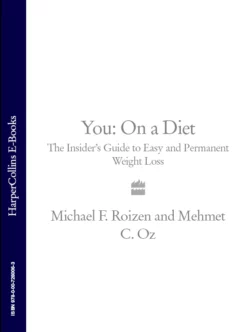You: On a Diet: The Insider’s Guide to Easy and Permanent Weight Loss

Michael Roizen и Mehmet Oz
Тип: электронная книга
Жанр: Спорт, фитнес
Язык: на английском языке
Стоимость: 247.24 ₽
Статус: В продаже
Издательство: HarperCollins
Дата публикации: 16.04.2024
Отзывы: Пока нет Добавить отзыв
О книге: Drs Michael F. Roizen and Mehmet C. Oz, authors of the million-copy bestseller ‘YOU: The Owner′s Manual’, have devised a diet that is so effective you′ll notice changes in your body immediately. Starting with a Two-Week Reboot that will help you lose up to two inches around your waist, you will shed your unwanted pounds forever.‘YOU on a Diet’ is not another faddy crash-diet weight loss plan: you will lose weight – and a lot of it – but you will also gain the knowledge, insight and power to keep off the pounds you lose. Knowledge is the most powerful motivator when it comes to making the right food choices: know the ‘why’ and you′ll successfully handle the ‘how’.• Find out your ideal shape – and how to reach it• Lose weight without hunger – you need only 100 calories less a day• Enjoy flexibility – you can still indulge in treats• Rebalance body chemicals and hormones – these, not willpower, dictate what you eat• Stop worrying about what you weigh – it′s your waist size that countsRoizen and Mehmet′s clear plan combined with:• Amazing YOU facts (e.g. 95% of your body′s serotonin is found in your intestines – there′s only 2-3% in your nervous system)• Eating tips (e.g. eating a small handful of nuts before your meal tricks your body into thinking that you are fuller sooner)• Interactive questionnaires (e.g. are your emotions affecting your food choices?)make this diet one of the most cutting-edge and easy-to-follow of our time. Successful long-term weight loss is only found in one place: YOU.